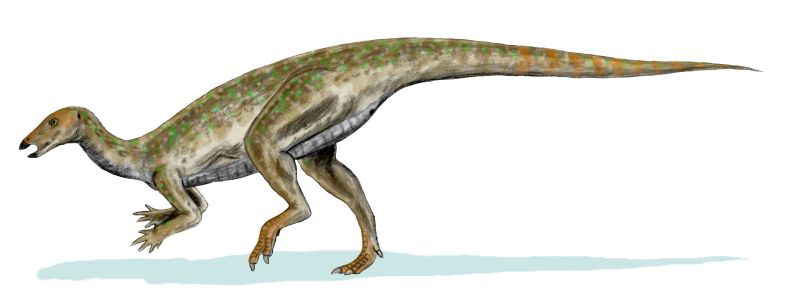Long before birds dominated the skies and even before bats took their first fluttering flights, another group of animals had already mastered the art of aerial locomotion. Pterosaurs, whose name means “winged lizards,” were the first vertebrates to evolve powered flight. These remarkable reptiles weren’t dinosaurs, though they were close relatives, and they inhabited Earth for over 160 million years during the Mesozoic Era. From small crow-sized flyers to giants with wingspans rivaling small airplanes, pterosaurs represent one of evolution’s most fascinating success stories. Their diverse adaptations and specialized anatomy allowed them to conquer virtually every aerial niche available in the ancient world, making them true rulers of prehistoric skies.
Origins and Evolutionary History
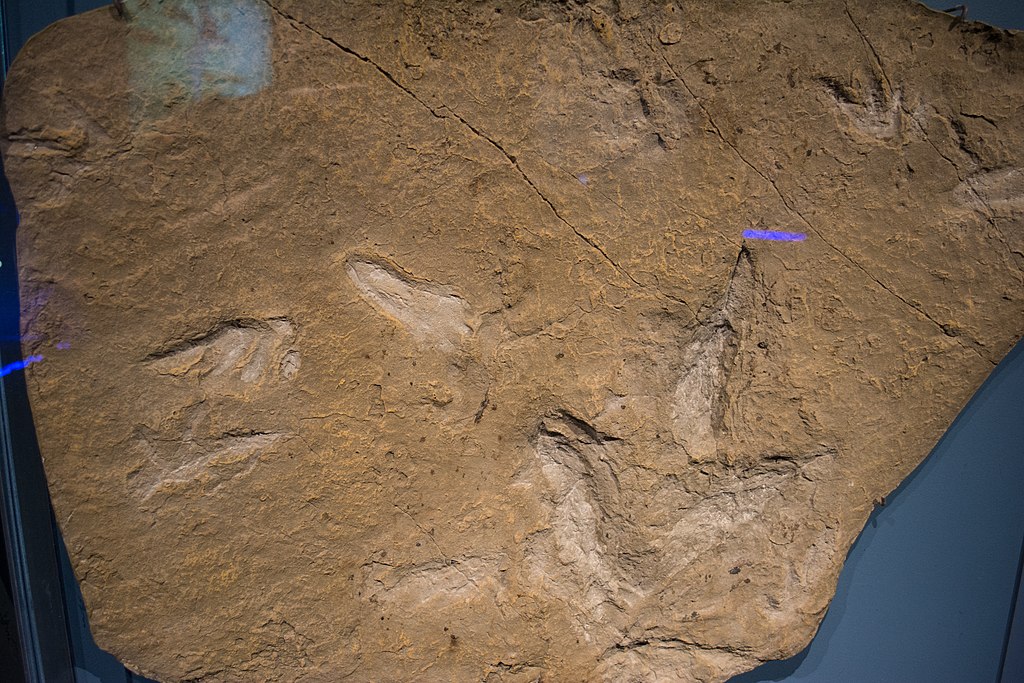
Pterosaurs first appeared in the fossil record during the Late Triassic period, approximately 228 million years ago, and persisted until the end-Cretaceous mass extinction event 66 million years ago that also wiped out non-avian dinosaurs. Their origins remain somewhat mysterious, though scientists believe they evolved from small, possibly bipedal archosauromorph reptiles. The earliest known pterosaur fossils come from Alpine regions of northern Italy, with species like Eudimorphodon representing these pioneering aerial reptiles. What makes pterosaur evolution particularly remarkable is how rapidly they appear to have developed the complex adaptations necessary for powered flight. Unlike birds and bats, which evolved flight independently and much later, pterosaurs left relatively few transitional fossils showing the step-by-step evolution of their flight capabilities, suggesting this adaptation may have evolved relatively quickly or in environments where fossilization was unlikely.
Anatomy of Flight: The Pterosaur Wing

The pterosaur wing represents one of the most elegant solutions to the challenge of vertebrate flight ever evolved. Unlike bird or bat wings, pterosaur wings consisted of a flight membrane called a patagium that stretched from an enormously elongated fourth finger to the ankle or foot. This membrane was supported by a complex network of structural fibers called actinofibrils, which provided strength and allowed precise control over the wing’s shape. The pterosaur’s other fingers remained free and developed into claws that could be used for climbing or grasping prey. Their wing design allowed for remarkable flight efficiency, with the ability to lock their joints in extended positions to reduce muscle fatigue during long flights. Perhaps most impressively, evidence suggests the wings contained a sophisticated network of blood vessels and muscles that allowed pterosaurs to thermoregulate and actively control the tension and shape of their wings during flight, making them incredibly responsive aerial hunters or gliders.
Size Extremes: From Miniatures to Giants
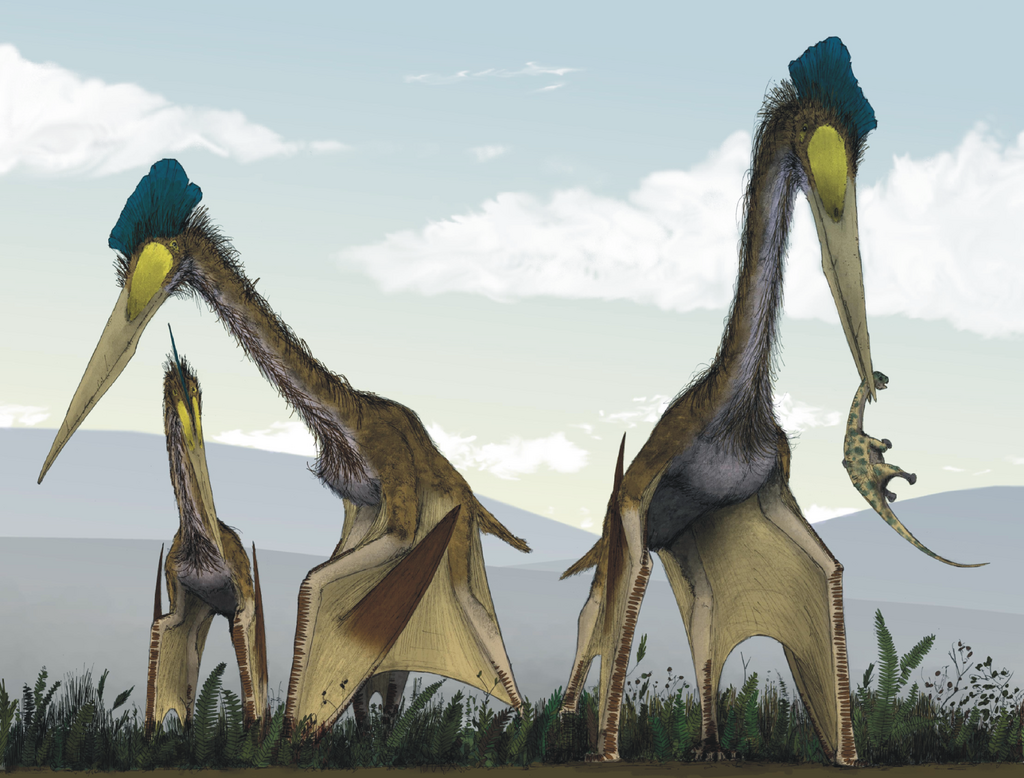
One of the most fascinating aspects of pterosaur evolution was the extreme size range these animals achieved over their 160-million-year reign. The earliest pterosaurs were relatively modest in size, with wingspans of around 50 centimeters to 1 meter, comparable to modern crows or seagulls. By the Late Jurassic and Cretaceous periods, however, some pterosaur lineages had evolved gigantism on an unprecedented scale. The azhdarchid pterosaurs represent the pinnacle of this trend, with Quetzalcoatlus northropi estimated to have achieved a wingspan of 10-11 meters—roughly the size of a small airplane. At the other end of the spectrum, species like Nemicolopterus crypticus had wingspans of just 25 centimeters, making them smaller than many modern birds. This incredible size diversity allowed pterosaurs to exploit virtually every aerial ecological niche available, from forest-dwelling insectivores to coastal fish hunters to enormous terrestrial predators capable of taking down small dinosaurs.
Skull and Jaw Adaptations
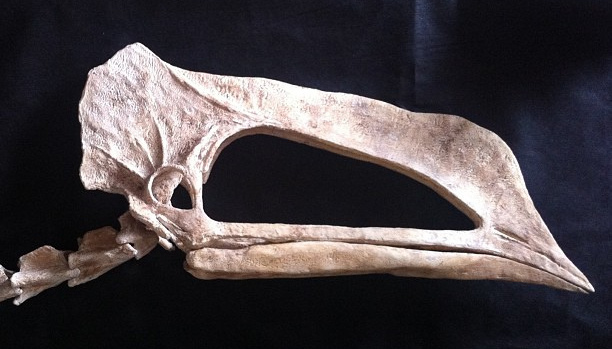
Pterosaur skull morphology underwent remarkable diversification, reflecting their varied ecological roles and feeding strategies. Early pterosaurs typically had jaws lined with numerous small, sharp teeth ideal for catching fish or insects. As they evolved, some groups developed highly specialized cranial features: Pteranodon had a long, toothless beak perfect for plucking fish from the water, while Dsungaripterus evolved robust, curved jaws with specialized crushing teeth for shellfish. Perhaps most bizarre was Pterodaustro, which possessed over 1,000 bristle-like teeth that functioned as a sieve for filter-feeding, similar to modern flamingos. Many pterosaurs also evolved elaborate head crests that varied dramatically in size and shape between species. While once thought to be primarily for aerodynamic purposes, research now suggests these crests likely served as display structures for species recognition and sexual selection. The extreme variation in skull morphology across pterosaur species represents one of the most dramatic examples of adaptive radiation in vertebrate evolution.
Remarkable Terrestrial Capabilities

Contrary to earlier depictions of pterosaurs as awkward and clumsy on land, modern research reveals they were likely quite competent terrestrial animals when not flying. Fossil trackways and anatomical studies indicate pterosaurs walked on all fours, with their wings folded and the elongated fourth finger pointed backward. Their unique gait involved walking on their palms and the knuckles of their three small fingers, with most species adopting a plantigrade (flat-footed) stance with their feet. The larger pterodactyloid pterosaurs appear to have been particularly adept on land, with some species showing adaptations for enhanced terrestrial mobility, including stronger limbs and more upright postures. Evidence from the azhdarchid family suggests these giant pterosaurs were skilled terrestrial predators, using their long necks and powerful beaks to capture prey while striding across ancient plains like modern storks. This terrestrial proficiency challenges the once-common view that pterosaurs were primarily aerial animals that could barely function on the ground.
Sensory Systems and Intelligence
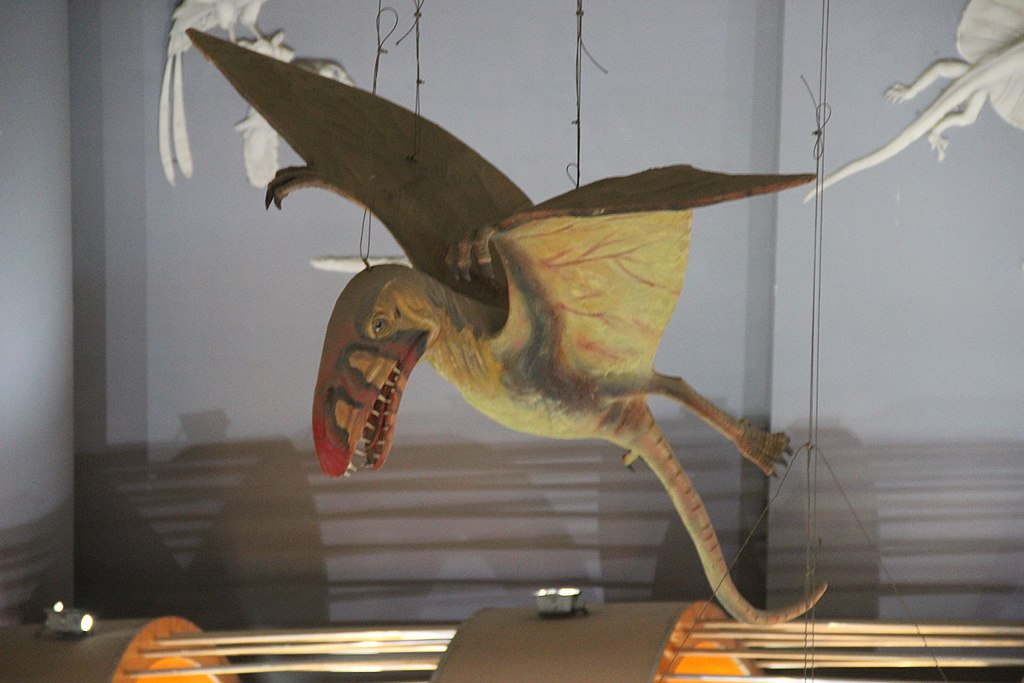
Pterosaur brains were relatively large for reptiles, suggesting these aerial hunters possessed advanced cognitive abilities necessary for flight. Endocasts (natural casts of brain cavities) reveal large floccular lobes—brain regions associated with maintaining balance and coordinating complex movements—indicating sophisticated flight control systems. Their vision appears to have been exceptional, with large orbits suggesting acute eyesight necessary for spotting prey from great heights or navigating complex environments. Some pterosaurs show evidence of heightened olfactory capabilities, particularly in fish-hunting species that may have used smell to locate productive feeding areas over vast oceans. Studies of pterosaur inner ear structures indicate they possessed a well-developed sense of equilibrium and spatial orientation, crucial adaptations for aerial life. While pterosaur intelligence was likely not comparable to modern birds, their sensory and neurological adaptations represent impressive specializations that allowed them to thrive as active, highly mobile predators in diverse environments for over 160 million years.
Reproduction and Growth

Our understanding of pterosaur reproduction has been revolutionized by remarkable fossil discoveries in the past two decades. Evidence now confirms that pterosaurs laid eggs, with several fossilized pterosaur eggs preserved with embryos inside providing unprecedented insights into their reproductive biology. These eggs had parchment-like shells similar to those of some modern reptiles rather than the hard calcified shells of birds. Embryonic pterosaur fossils reveal that hatchlings possessed well-developed wing membranes and proportionally large eyes, suggesting they may have been capable of limited flight shortly after hatching. However, their wing bones were poorly ossified, indicating some period of parental care was likely necessary before they became fully flight-capable. Growth ring studies in pterosaur bones indicate that, unlike modern reptiles, pterosaurs grew rapidly in their early years before slowing as they reached maturity, a growth pattern more similar to birds than to typical reptiles. This precocial development, combined with parental care, represents a sophisticated reproductive strategy that likely contributed to pterosaur evolutionary success.
Ecological Diversity and Feeding Strategies

The ecological roles pterosaurs filled throughout their evolutionary history were remarkably diverse, demonstrated by their wide range of feeding adaptations. Early pterosaurs were primarily insectivorous, using their sharp teeth to capture flying insects mid-air, similar to modern swifts or nighthawks. As they diversified, many lineages became specialized fish-hunters, skimming low over water bodies and snatching prey with elongated jaws. The ornithocheirid pterosaurs developed forward-pointing teeth ideal for trapping slippery fish, while istiodactylids had laterally compressed blade-like teeth perfect for slicing through flesh, suggesting they may have been scavengers. Some species like Thalassodromeus sethi show evidence of skim-feeding behavior, dragging their lower jaws through water to catch prey. Perhaps most surprising are the azhdarchids, which appear to have been terrestrial stalkers using their long necks and powerful beaks to capture small vertebrates and invertebrates on land. This ecological diversification allowed pterosaurs to minimize competition between species while maximizing resource utilization across terrestrial, freshwater, and marine environments.
The Pterosaur-Dinosaur Relationship

Though often confused with dinosaurs in popular culture, pterosaurs represent a separate branch of archosaur reptiles. Both groups descended from a common ancestor in the early Triassic period, making them evolutionary cousins rather than direct relatives. This relationship places pterosaurs closer to dinosaurs (and by extension, birds) than to other reptile groups like lizards, snakes, or crocodilians. The scientific classification groups pterosaurs and dinosaurs together within Ornithodira, recognizing their shared ancestral characteristics like partially upright posture and digitigrade foot positioning. Despite this relationship, pterosaurs evolved their own distinct anatomical specializations for flight that differ significantly from the flight adaptations later developed by avian dinosaurs. Fossil evidence suggests pterosaurs and dinosaurs coexisted for over 160 million years, developing complex ecological relationships. Some pterosaurs likely scavenged dinosaur carcasses, while others may have faced predation from dinosaurs, particularly as vulnerable juveniles or during their terrestrial activities. Understanding this relationship helps clarify that the Mesozoic skies were dominated not by flying dinosaurs, but by these specialized reptilian cousins.
Major Pterosaur Groups
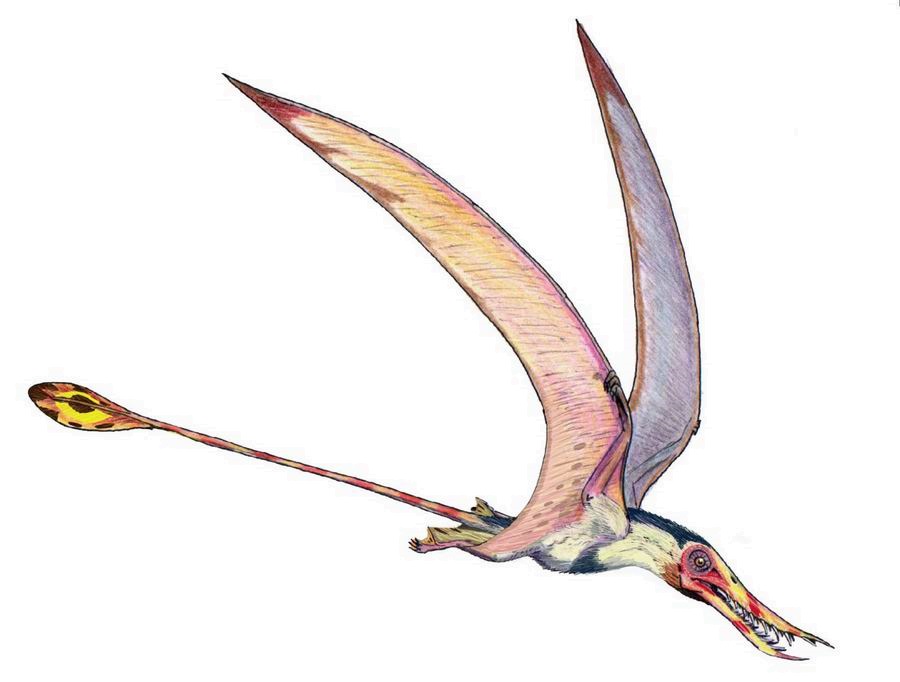
Pterosaur classification recognizes two major subdivisions that reflect their evolutionary history and anatomical differences. The first group, Rhamphorhynchoidea (now considered paraphyletic), encompasses the earlier, more primitive pterosaurs that generally possessed long tails, short metacarpal bones, and teeth throughout their jaws. Prominent members include Rhamphorhynchus, with its diamond-shaped tail vane, and Dimorphodon, with its large head and differentiated teeth. The second major division, Pterodactyloidea, represents the more derived pterosaurs that generally featured reduced tails, elongated metacarpals, and often specialized skull morphologies. This diverse group includes several well-defined families: the Pteranodontidae with their massive skull crests and toothless beaks; the filter-feeding Ctenochasmatidae; the mollusk-crushing Dsungaripteridae; and the notably successful Azhdarchidae, which produced the largest flying animals ever known. These distinct lineages showcase the remarkable adaptive radiation of pterosaurs, as they evolved increasingly specialized forms to exploit different ecological niches throughout the Mesozoic Era.
Flight Capabilities and Biomechanics
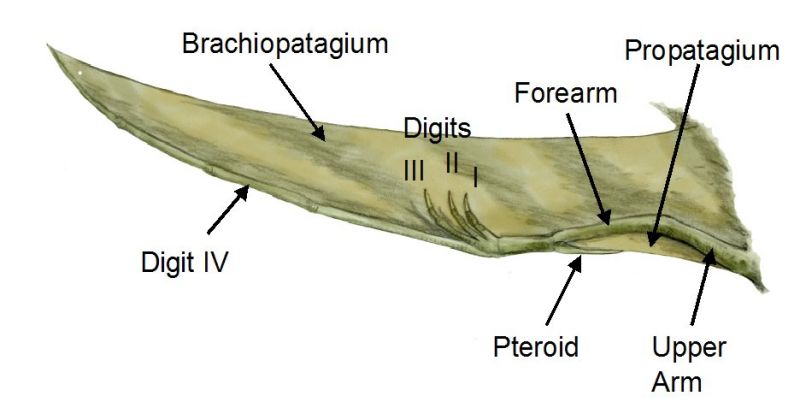
Modern research has dramatically revised our understanding of pterosaur flight capabilities, revealing them to be far more sophisticated flyers than previously thought. Computational fluid dynamics and biomechanical modeling indicate pterosaurs were active, powerful flyers capable of true powered flight, not merely gliding as once believed. Their unique wing structure, with membranes supported by the elongated fourth finger and reinforced with actinofibrils, provided both strength and flexibility while minimizing weight. For takeoff, evidence suggests most pterosaurs used a quadrupedal launch mechanism, pushing off with their powerful forelimbs to achieve initial lift—a method quite different from birds but somewhat similar to bats. Once airborne, their flight style varied by species; smaller pterosaurs were likely agile aerial insectivores performing complex aerial maneuvers, while giant pterosaurs like Quetzalcoatlus probably relied more on soaring using thermal updrafts to cover vast distances efficiently with minimal energy expenditure. Their hollow bones, air sacs similar to those in birds, and efficient respiratory systems all contributed to the lightweight but strong body structure necessary for aerial locomotion, making them masterfully adapted for life in the skies.
Pterosaur Extinction

The extinction of pterosaurs coincided with the end-Cretaceous mass extinction event approximately 66 million years ago, which eliminated approximately 75% of all species on Earth, including non-avian dinosaurs. Evidence strongly suggests this extinction resulted from the catastrophic impact of a massive asteroid or comet in what is now the Yucatán Peninsula of Mexico, creating the Chicxulub crater. This impact triggered global climate disruption, including tsunamis, wildfires, and an extended period of darkness and cooling as dust and aerosols blocked sunlight. For pterosaurs, these conditions would have been particularly devastating, as they relied heavily on active flight for hunting and likely had high metabolic requirements. The disruption of food webs and destruction of habitats would have eliminated their prey base, while atmospheric changes may have made aerial locomotion difficult or impossible. Intriguingly, fossil evidence indicates pterosaur diversity was already declining in the Late Cretaceous before the extinction event, suggesting they may have been facing evolutionary pressures from competition with birds, which had already diversified extensively by this time. This pre-existing stress may have made pterosaurs particularly vulnerable when the final catastrophe struck.
Pterosaurs in Scientific Study and Popular Culture
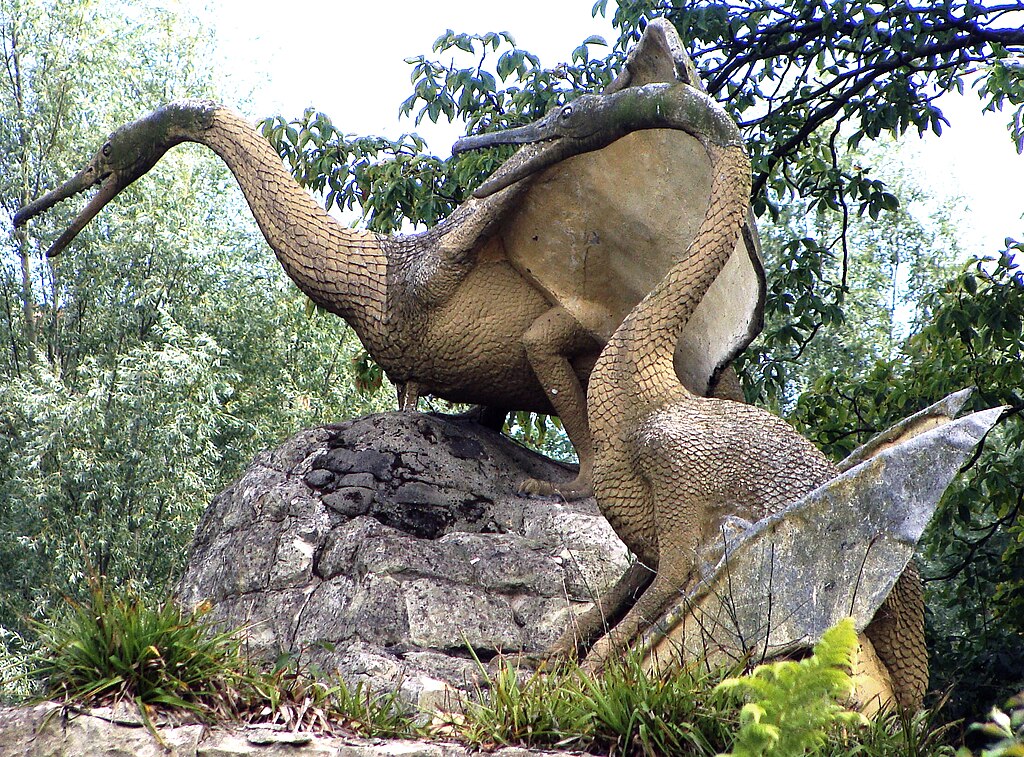
Since their first scientific description in 1784 by Italian naturalist Cosimo Alessandro Collini, pterosaurs have captivated both researchers and the public imagination. Early scientific interpretations often misunderstood their nature, with theories suggesting they were swimming creatures or bizarre bat-like mammals. By the mid-19th century, Richard Owen correctly identified them as flying reptiles, though many anatomical details remained poorly understood for decades. The portrayal of pterosaurs in popular culture has frequently lagged behind scientific understanding, with film and television often depicting them as leathery, bat-like monsters rather than the sophisticated, likely feather-covered creatures revealed by modern research. James Gurney’s Dinotopia books and the Walking with Dinosaurs series represented steps forward in accurate representation, though even these have been superseded by newer findings. Recent scientific advances using CT scanning, electron microscopy, and computational modeling have revolutionized our understanding of pterosaur flight mechanics, physiology, and appearance. Ongoing discoveries continue to refine our picture of these remarkable animals, with new specimens from China, Brazil, and North Africa regularly adding to our knowledge and challenging previous assumptions about pterosaur biology and ecology.
Conclusion
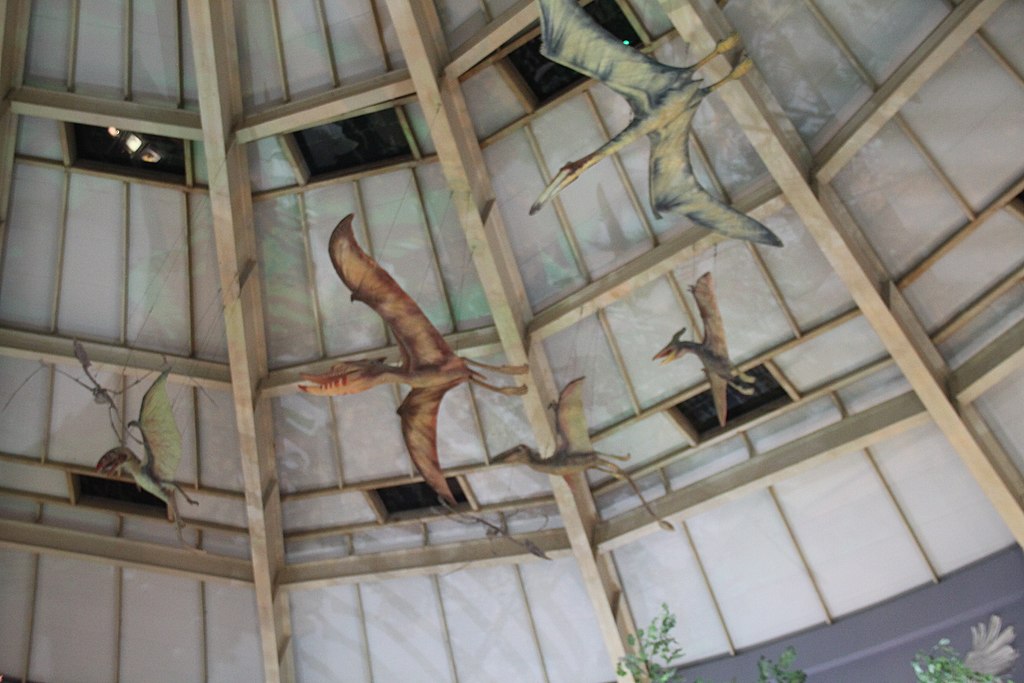
Pterosaurs represent one of evolution’s most remarkable success stories—reptiles that conquered the skies for over 160 million years through spectacular adaptations. From their specialized wing membranes to their pneumatized skeletons, from their diverse feeding strategies to their sophisticated sensory systems, pterosaurs demonstrate the incredible potential for evolutionary specialization. Though they ultimately perished alongside the non-avian dinosaurs, their legacy lives on as the first vertebrates to evolve powered flight. Modern birds may dominate today’s skies, but they fly in the evolutionary shadow of these ancient masters of the air, whose adaptations for aerial life remain unparalleled in many ways. As science continues to uncover new fossils and develop better techniques for studying these fascinating creatures, our appreciation for pterosaurs’ evolutionary achievements only grows, cementing their place as one of the most extraordinary animal groups ever to exist on our planet.

